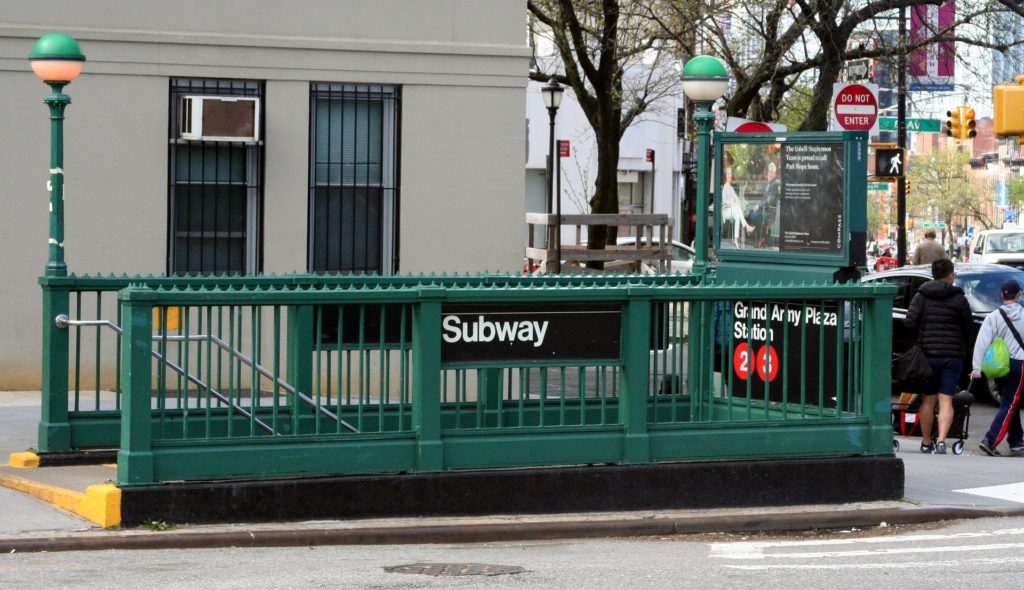By @derek-frisicchio, @shan-chang, @sfairoos, & @cathyjhu
The MTA’s Current Status with Accessibility
In the United States, there are over 70 light rail, rapid rail, commuter rail, monorail, and inclined-plane systems. According to the Federal Transit Authority’s (FTA) National Transit Database, 72% of all systems have accessible stations and the entire nation’s fleet is 88% accessible (Schruth). This is a direct effect of the passage of the Americans with Disabilities Act which was signed into law in 1990. Since most of the public transit authorities in the US are operated under federal funds and agencies, full ADA compliance is a must for all cars, buses, and rail stations – although, there are still many improvements to be made.
Besides investing in the infrastructure for each station, like the MTA recently did by committing $5.2 billion dollars towards installing elevators in 70 stations (Lewis), it’s imperative for online public transit trip planners to be accessible as well. Not only should they be showing which stations are ADA compliant, but they should also operate under the Web Content Accessibility Guidelines (WCAG) to ensure proper usability is granted to all people, regardless of their disability.
Planning Website Improvements
There are currently no articles or news related to how public transit authorities across the US are pushing efforts for their websites to be accessible. On the FTA website there is a section dedicated to sharing messaging on how Federal agencies are required to make all “electronic and information technology accessible to the people with disabilities.” They reference the Rehabilitation Act of 1973 which was amended in 1998 due to the increased relevance and reliance on the world wide web.
Since most public transit agencies are federally funded and operated, it’s rational to believe that their websites should operate at peak accessibility performance. This comes at a time when the call for accessible and affordable public transit seems to be at an all-time high. Plenty of grassroots movements and bloggers see that an accessible society is one that provides tons of public transit opportunities. It’s weird to think that a person has to purchase a car just to participate in society.
MTA Project Motivation
Our team is based in New York, NY – a city with the highest ridership of public transit in all of the US and possibly North America. We all rely on it each day to get to class and travel around the city for grocery shopping, entertainment, doctor appointments, and more – just like any other New Yorker. Since the city has the largest population in the US, it’s imperative that its stations and websites follow accessible best practices. So, our team decided to evaluate the MTA trip planner tool – the first content you see when clicking through to the MTA website.
Through a cognitive walkthrough and WCAG evaluation, we found out that the MTA website is quite possibly one of the most robust websites for accessibility. Neither one of us could find a single A or AA rating in the WCAG evaluation that had an infraction. It’s clear that the MTA has not only focused on optimizing the subway stations but their website experience as well.
The Good About MTA
During our WCAG evaluation of the MTA Trip Planner, the research team believed that the site normally passed AA ratings for many of the guidelines. There were also sections of the tool that passed with a AAA rating. It’s not surprising that we found this site to have such a high pass rate of AA and AAA ratings. The MTA and other public transit agencies are held to a higher standard of accessibility in design because they are all federal agencies. It would have been suspicious if a federal agency, even for public transit, failed at passing the AA standards for accessibility set by the WCAG.
When trying to look at the MTA Trip Planner through the eyes of a person living with dyslexia, the cognitive walkthrough provided more evidence to say that the site has a high standard for accessibility. The one aspect we found that failed regularly in our cognitive walkthrough was the tool’s lack of providing further assistance outside of the documentation that’s already available.
How Can It Be Better
We found that it is very difficult for users to get help if they run into a problem while using the trip planner tool. To access further assistance, users have to navigate through several pages outside of the MTA Trip Planner tool. Based on our requirements for the cognitive walkthrough, this experience isn’t deemed accessible. We believe it’s a primary feature that would push the website to be even more accessible and inclusive.
To make it easier for users to get help, we recommend adding an accessible chatbot to the MTA website, such as from Olark, Apple Business Chat, or Zendesk (Byrne-Haber). Adding a chatbot that allows users to access the chatbot using a screen reader or keyboard, gives users sufficient time to complete forms or type in their questions, and uses plain language for maximum understandability, would be very beneficial for all users. Providing chat assistance where the users are in their experience without interrupting their flow would ensure a higher level of positive sentiment for the MTA Trip Planner tool.
References
Byrne-Haber, Sheri. “Making Chatbots Accessible.” Medium, Medium, 5 July 2022, https://sheribyrnehaber.medium.com/making-chatbots-accessible-83c6a2f4f5c9.
Lewis, Caroline. “NYC Transit Accessibility Is Abysmal – Here’s How Other Cities Do It Better.” Gothamist, 20 Mar. 2020, https://gothamist.com/news/nyc-transit-subway-accessibility-other-cities.
Schruth, Susan. “Despite Progress, True Public Transit Accessibility Remains Elusive.” Metro Magazine, Metro Magazine, 15 Nov. 2018, https://www.metro-magazine.com/10007269/despite-progress-true-public-transit-accessibility-remains-elusive.
“Web Accessibility.” Web Accessibility | FTA, https://www.transit.dot.gov/fta-web-policies/accessibility/web-accessibility.
